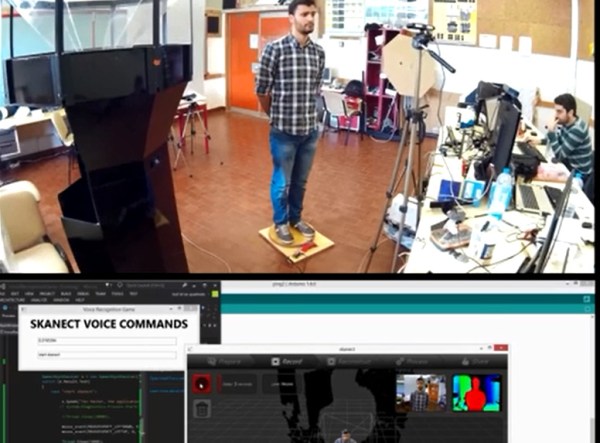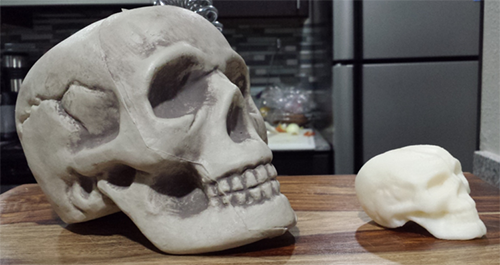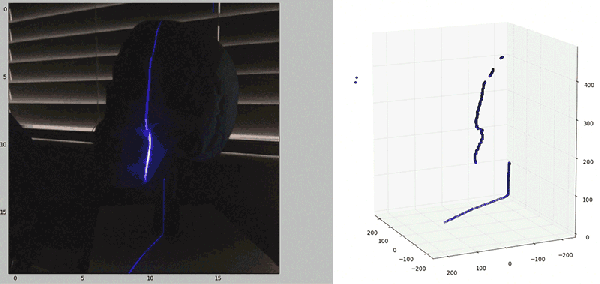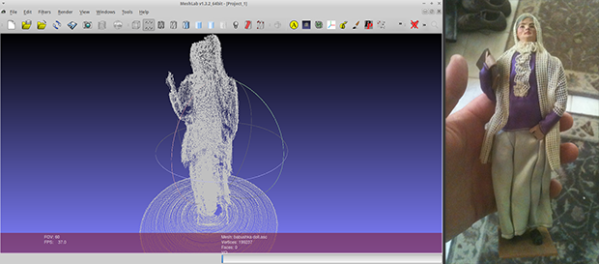It seems almost every day 3D scanning is becoming more and more accessible to the general DIYer. The hardware required is minimal and there are several scanning softwares and workflows to choose from. However, if you have slowly walked around a subject while holding a Kinect and trying to get a good scan, you know this is not an easy task. A quick internet search will result in several DIY scanning setup solutions that have been cobbled together and lack substantial documentation…. until now! [aldricnegrier] is fighting back and has designed and documented a rotary table that will spin at a constant speed while a subject is 3D scanned, making person scanning just that much easier.
The project starts off with a plywood base with a Lazy Susan bearing assembly attached to the top. The Lazy Susan supports the rotating platform for the subject person to stand on, but it’s not just a platform, it’s also a huge gear! The platform teeth mesh with a much smaller 3D printed gear mounted on the shaft of a DC motor and reduction gearbox assembly.
Another goal of the project was to make the rotary table autonomous. There is an ultrasonic sensor mounted to the base aimed above the rotating platform. The ultrasonic sensor is connected to an Arduino and if the system senses someone or something on the platform for 3 seconds, the Arduino will command a DC motor driver to start spinning the platform.
As cool as this project is so far, [aldricnegrier] wanted to make it even cooler: he added speech recognition. Using Microsoft’s Speech Toolkit, saying the words ‘Start Skanect‘ will start the scanning process on the PC. Now, a sole person can scan themselves easily and reliably.
[aldricnegrier] has made all of his CAD files, STL files and Arduino code available so anyone wanting to build this clearly capable setup can do so!

















